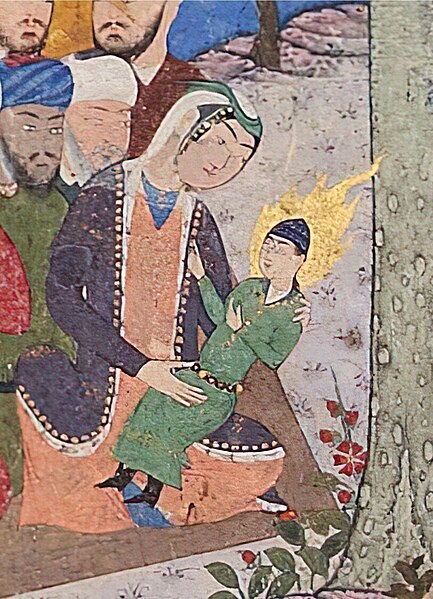Musa va 'Uj is a 15th-century manuscript painting from Iran or Iraq. The painting is not signed by any artist, nor does it have an original title—in scholarly literature it has become known by the title Musa va 'Uj. It is unusual in combining figures from all three Abrahamic religions: the Islamic prophet Muhammad, the Madonna and Child, and Moses. Some of Muhammad's successors and family are also shown. First described in the 1930s, the painting was later acquired by the Khalili Collection of Islamic Art.
Musa va 'Uj
Detail of the Virgin Mary and Jesus
Og was, according to the Hebrew Bible and other sources, an Amorite king of Bashan who was slain along with his army by Moses and his men at the battle of Edrei. In Arabic literature he is referred to as ʿŪj ibn ʿAnāq.
Og depicted on Musa va 'Uj, c. 15th century
Some see Rujm el-Hiri, dating from the third Millennium BC in the Golan Heights, as a source for legends about "a remnant of the giants" for Og.
Illustration of Pantagruel for the Fourth Book in the Pantagruel and Gargantua series by François Rabelais published in Œuvres de Rabelais (Paris: Garnier Freres, 1873), vol. 2, Book IV, ch. XXVII, opposite page 87, Gustave Doré, 1873
The giant 'Uj ibn 'Unuq carries a mountain with which to kill Moses and his men.






